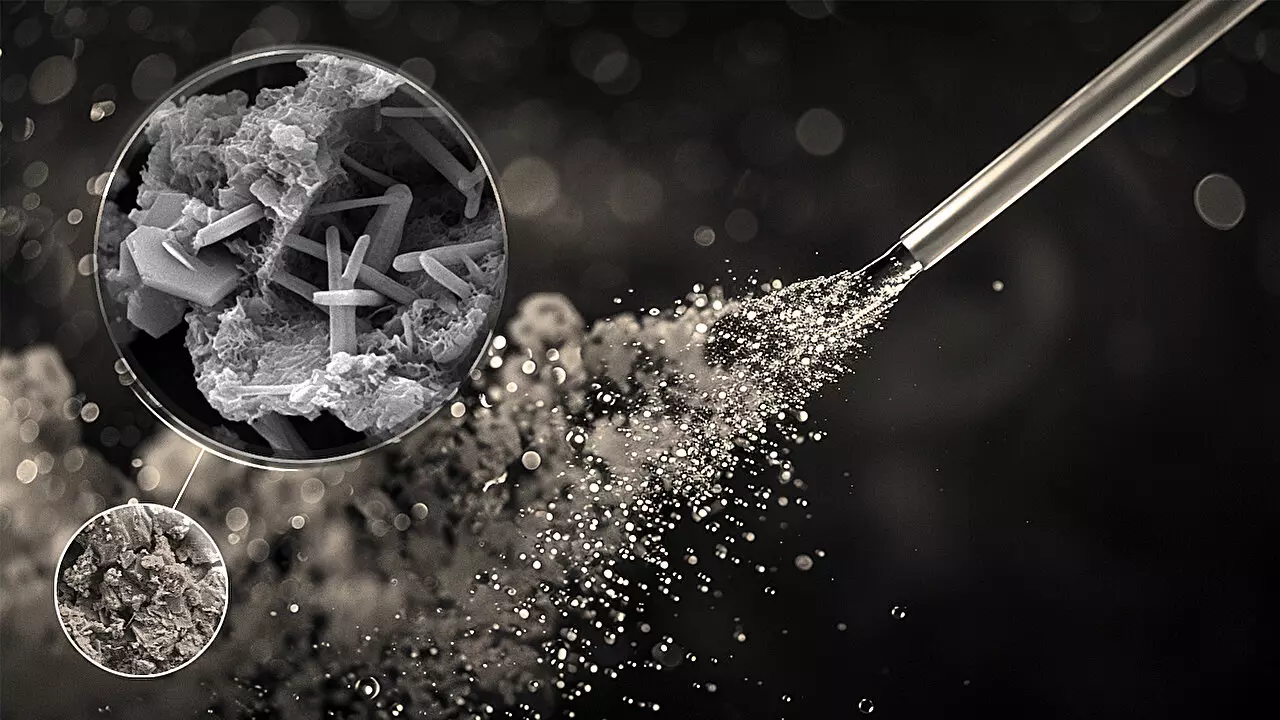In a groundbreaking development led by engineers from Northwestern University, a new approach to concrete manufacturing has emerged that not only addresses the pressing issue of carbon dioxide emissions but also enhances the quality of one of the world’s most utilized materials. By incorporating carbonated water solutions during the concrete mixing process, researchers have unveiled a method capable of sequestering significant amounts of CO2—up to 45%—while simultaneously maintaining the strength and durability of the finished product. This innovation promises to revolutionize the construction industry and significantly mitigate its environmental impact.
A Need as Urgent as Climate Change
The construction sector contributes to an alarming 8% of global greenhouse gas emissions, primarily through the processes used to produce cement. As the climate crisis intensifies, it is imperative that industries explore methods to reduce their carbon footprint. The work spearheaded by Alessandro Rotta Loria and his colleagues at Northwestern reflects a keen awareness of this need; their findings shine a light on a pathway that could transform concrete—and, by extension, the construction industry—into a more environmentally friendly endeavor.
Concrete’s role in infrastructure is undeniable; it is second only to water in terms of global consumption. However, the processes behind its production are anything but sustainable. Historically, efforts to sequester CO2 within concrete have faced substantial drawbacks, from low efficiency rates to energy-intensive practices that often compromise the integrity of the material. Loria’s innovative technique ushers in the potential for not only a reduction in emissions but also a concrete that enhances structural strength.
A Breakthrough in Carbon Capture
Traditionally, methods for carbon capture in concrete fall into two main approaches: hardened concrete carbonation, which involves injecting CO2 gas into solid blocks, and fresh concrete carbonation, where CO2 is introduced during mixing. Both methodologies grapple with challenges such as insufficient CO2 absorption and energy inefficiency. Loria’s research offers a fresh take on the latter method, utilizing carbonated water combined with a small quantity of cement powder prior to the addition of aggregates. This novel approach results in a more fluid mixture capable of facilitating rapid chemical reactions that yield solid calcium carbonate crystals.
The significance of this technique extends beyond mere CO2 absorption. By optimizing the mixing process, Loria’s team has managed to create a concrete product that can achieve greater concentrations of calcium carbonate than its traditional counterparts. This optimization not only enhances the CO2 sequestration efficiency but also promises an uncompromised structural integrity, a feat that has historically been challenging within the realm of carbonation methods.
Concrete with Enhanced Strength and Applicability
One of the most compelling findings of this research is the ability of carbonated concrete to maintain, or even exceed, the strength of conventional concrete. Historically, carbonation techniques have been marred by concerns over potential reductions in material strength due to chemical reactions. However, preliminary analyses suggest that the new method may preserve or enhance structural durability. This revelation is crucial; it means that the enhanced concrete can be used without restrictions in existing applications ranging from beams and slabs to columns and foundations.
What this study reveals is not only the potential for improved concrete but the profound implications for the future of construction. By embedding the process of carbon capture into the very fabric of concrete production, we move closer to a reality where cement and concrete can serve as effective carbon sinks—an integral part of a sustainable cycle aimed at mitigating climate change.
The Future of Sustainable Construction
The collaboration between Northwestern engineers and CEMEX, a leader in sustainable construction materials, underscores the potential for industry application of this innovative approach. The cross-pollination of academia and industry not only fosters the quick implementation of cutting-edge research but also bolsters the drive for sustainable practices in construction.
As the world navigates the complexities of climate change and environmental degradation, groundbreaking advancements in the way materials are produced, like those presented by Loria and his team, will be pivotal. The simplicity and feasibility of incorporating carbonated solutions into existing concrete manufacturing processes make this development a beacon of hope for sustainable construction practices poised for the future. In a landscape where climate action is urgently needed, such innovations may well lead the charge in balancing development and sustainability, illustrating that even foundational industries like construction can evolve to meet contemporary challenges.


Leave a Reply